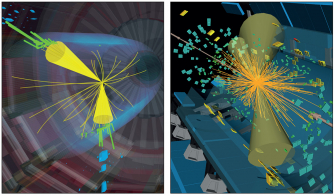
ICHEP’04, the 32nd International Conference on High Energy Physics, was successfully held in Beijing from 16-22 August, hosted by the Institute of High Energy Physics (IHEP) and the Chinese Academy of Sciences (CAS). As many as 737 physicists attended the meeting, which was opened by Chen Hesheng, director of IHEP, and Bai Chunli, vice-president of CAS.
The programme, as usual for ICHEP conferences, featured plenary talks to review the developments in major topics of interest to the global high-energy physics community, and parallel sessions consisting of talks about recent research results and future plans. There were 25 review talks in the plenary sessions and 296 talks in the 13 parallel sessions. The talks covered a wide range of topics, including electroweak physics, quantum chromodynamics, heavy quark and charm physics, top physics, neutrino physics, particle astrophysics and cosmology, hadron spectroscopy, charge-parity violation, quark matter, the search for new particles, and future accelerators and detectors.
The results from experiments at the Tevatron, the B-factories, the Beijing Electron-Positron Collider (BEPC) and the Relativistic Heavy Ion Collider at Brookhaven, as well as from accelerator-based and non-accelerator-based neutrino experiments also attracted great interest. In particular, experimental results on the possible pentaquark states and their theoretical interpretation were discussed extensively; the majority opinion seems to be that more experimental and theoretical studies are needed before any conclusions can be made. Progress in string theory, extra dimensions, black holes and lattice gauge calculations were also discussed.
The conference was also the occasion for the announcement, on 20 August by Jonathan Dorfan, chairman of the International Committee for Future Accelerators, that the committee had approved the recommendation by the International Technology Recommendation Panel that “cold” technology should be adopted for the future International Linear Collider.








